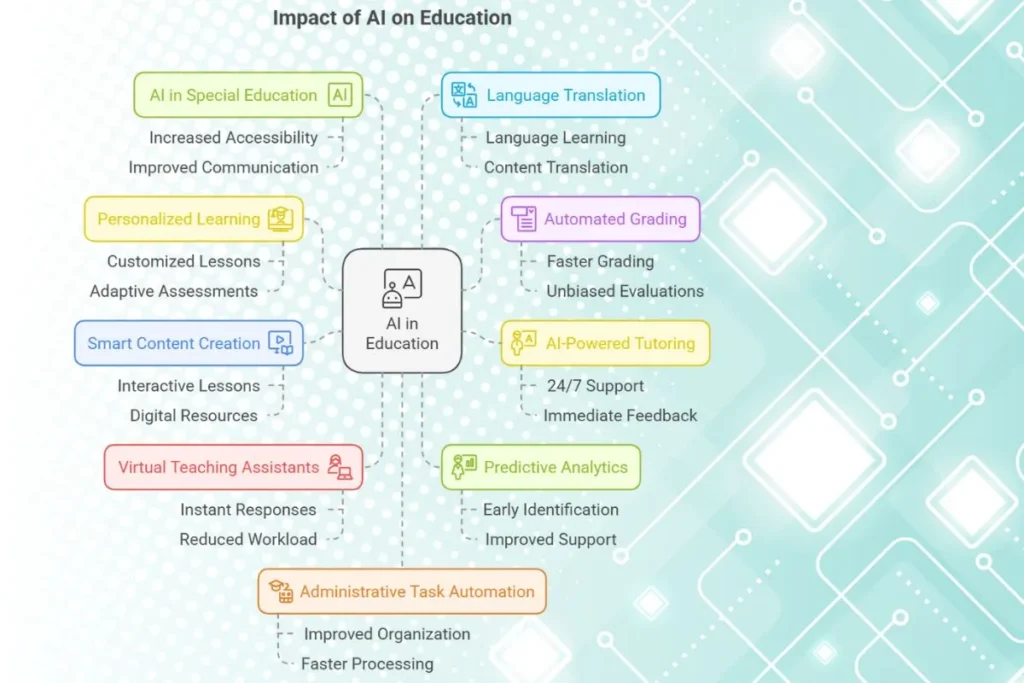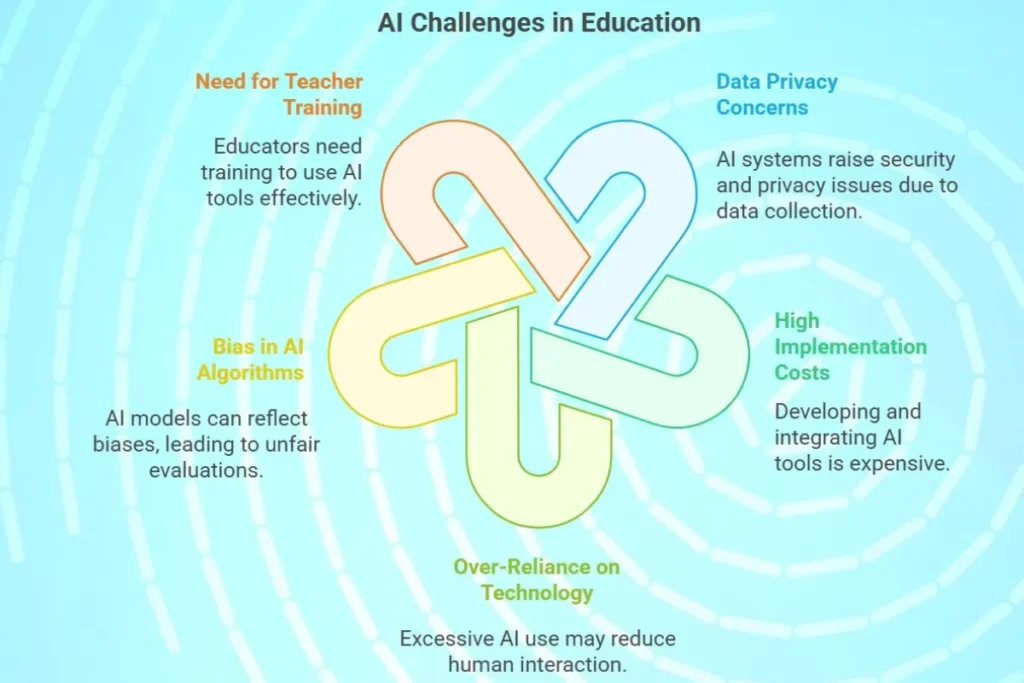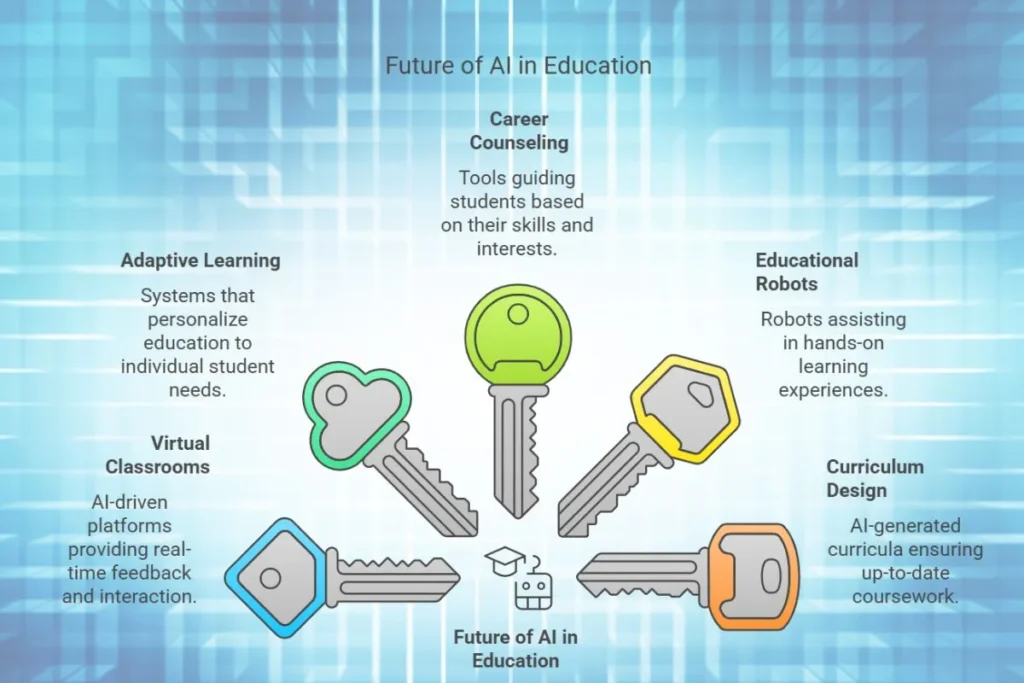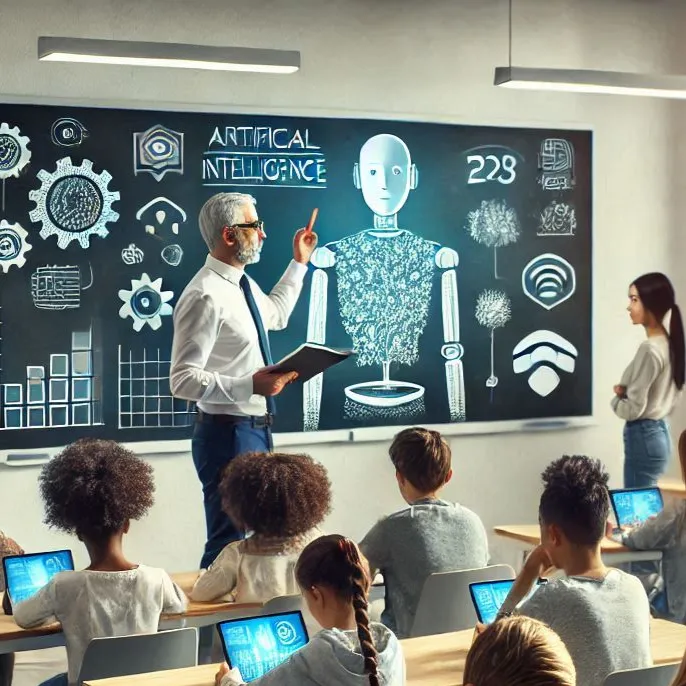Artificial intelligence (AI) has revolutionized education sector by personalizing learning, automating administrative tasks and enhancing student engagement. AI powered tools help teachers to improve efficiency, assist students with customized learning experiences and optimize overall educational outcomes. This is the impact of AI on education.
In this blog article we shall learn the impact of artificial intelligence in education sector. With the rapid adoption of AI in classrooms, online education and research, it is interesting to know how knowledge is delivered and learned.
Effect of Artificial Intelligence in Education Sector
AI plays a very important role in modern education. It improves teaching methods, makes learning more engaging and helps institutions to manage resources effectively. Below are the major areas where AI is making a significant impact.
1. Personalized Learning
AI customizes educational content to fit each student’s needs. It analyzes student performance, identifies strengths and weaknesses and adjusts learning materials accordingly.
Benefits:
- Customized lessons for different learning speeds
- Improved retention and understanding
- Adaptive assessments based on student progress
Example: Platforms like DreamBox and Carnegie Learning use AI to provide personalized math lessons based on a student’s learning ability.
2. Automated Grading and Assessment
AI automates grading, which reduces the time teachers spend on evaluations. It scores multiple choice questions, written responses and even complex essays using machine learning models.
Benefits:
- Faster grading
- Reduced workload for teachers
- Consistent and unbiased evaluations
Example: Turnitin’s AI driven tools assess grammar, structure and originality in student essays.
3. AI Powered Tutoring Systems
AI driven tutoring platforms provide instant support to students. These tools answer questions, explain concepts and guide learners through problems.
Benefits:
- 24/7 learning support
- Immediate feedback and explanations
- Helps students outside classroom hours
Example: Socratic, an AI powered app by Google, answers students’ questions with step by step explanations.
4. Smart Content Creation
AI helps to create educational materials, including interactive lessons, quizzes and study guides. It converts textbooks into digital formats and enhances them with multimedia elements.
Benefits:
- Engaging learning materials
- Faster content development
- Digital and interactive resources
Example: AI based tools like Quizlet generate study sets and practice tests automatically.
5. Virtual Teaching Assistants
AI chatbots and virtual assistants support teachers by answering common student questions, by scheduling assignments and providing feedback.
Benefits:
- Reduces teacher workload
- Instant responses to student queries
- More time for interactive teaching
Example: Georgia Tech’s AI teaching assistant, Jill Watson, helps to answer student questions in online courses.
6. Predictive Analytics for Student Performance
AI predicts student performance by analyzing data on attendance, test scores and engagement levels. Educators use this data to identify struggling students and provide early intervention.
Benefits:
- Early identification of learning gaps
- Better academic support
- Improved graduation rates
Example: Universities use AI to detect students with poor performance and offer personalized support programs.
7. AI in Special Education
AI powered tools assist students with disabilities by providing speech recognition, text to speech conversion and customized learning support.
Benefits:
- Increased accessibility for students with disabilities
- More independence in learning
- Improved communication tools
Example: Microsoft’s Seeing AI app helps visually impaired students to understand text and objects around them.
8. Language Translation and Learning Assistance
AI powered tools help students to learn new languages and translate educational content into multiple languages.
Benefits:
- Supports non native speakers
- Enhances language learning
- Removes language barriers in education
Example: Duolingo uses AI to personalize language lessons and improve vocabulary retention.
9. Automating Administrative Tasks
AI reduces the burden of administrative tasks such as attendance tracking, scheduling and record management.
Benefits:
- More time for teachers to focus on teaching
- Improved organization
- Faster processing of student records
Example: School management systems use AI to automate attendance and grading reports.
10. Enhancing Student Engagement
AI powered gamification and interactive learning platforms make education more engaging. These platforms use rewards, challenges and adaptive learning strategies.
Benefits:
- Increased motivation
- Improved participation
- Fun and interactive learning
Example: AI-powered platforms like Kahoot! use gamification to make quizzes more engaging for students.
11. AI in Higher Education and Research
AI supports academic research by analyzing large datasets, which identifies trends and assists researchers to generate useful tips faster.
Benefits:
- Faster data analysis
- Improved accuracy in research
- Automated literature reviews
Example: AI driven tools like Semantic Scholar help researchers to find relevant studies and predict future research trends.
12. AI in Career Guidance and Skill Development
AI helps students to choose careers by analyzing their skills, interests and market trends. It also provides recommendations for skill development.
Benefits:
- Career advice based on data
- Personalized learning paths
- Job market predictions
Example: AI powered career counseling platforms suggest courses and job opportunities based on a student’s profile.

Challenges of AI in Education Sector
Despite its benefits, AI in education faces some challenges:
1. Data Privacy Concerns
AI systems collect vast amounts of student data, which raises concerns about security and privacy.
2. High Implementation Costs
AI powered educational tools can be expensive to develop and integrate into school systems.
3. Over Reliance on Technology
Excessive use of AI may reduce human interaction in education, which affects social learning.
4. Bias in AI Algorithms
AI models can reflect biases present in training data, which leads to unfair evaluations.
5. Need for Teacher Training
Educators must be trained to use AI tools effectively for optimal results.

The Future of AI in Education Sector
AI will continue to grow education sector through developments such as:
- AI driven virtual classrooms that offer real time feedback and interaction.
- More advanced adaptive learning systems that personalize education even further.
- AI powered career counseling tools that guide students based on skills and interests.
- AI enhanced educational robots that assist in hands on learning experiences.
- AI generated curriculum design that ensures up to date and relevant coursework.
AI is set to revolutionize education sector by making learning more accessible, engaging and effective.

Conclusion
AI is transforming education sector by personalizing learning, automating tasks and improving student engagement. It is enhancing the learning experience for students and teachers by using AI powered tutors and predictive analytics etc.
The benefits of AI in education sector far outweigh the risks. Schools and universities who adopt AI technology solutions will improve learning outcomes, reduce workloads and prepare students for the future.
The future of AI in education is promising, with ongoing advancements set to make learning smarter and more efficient for generations to come.

